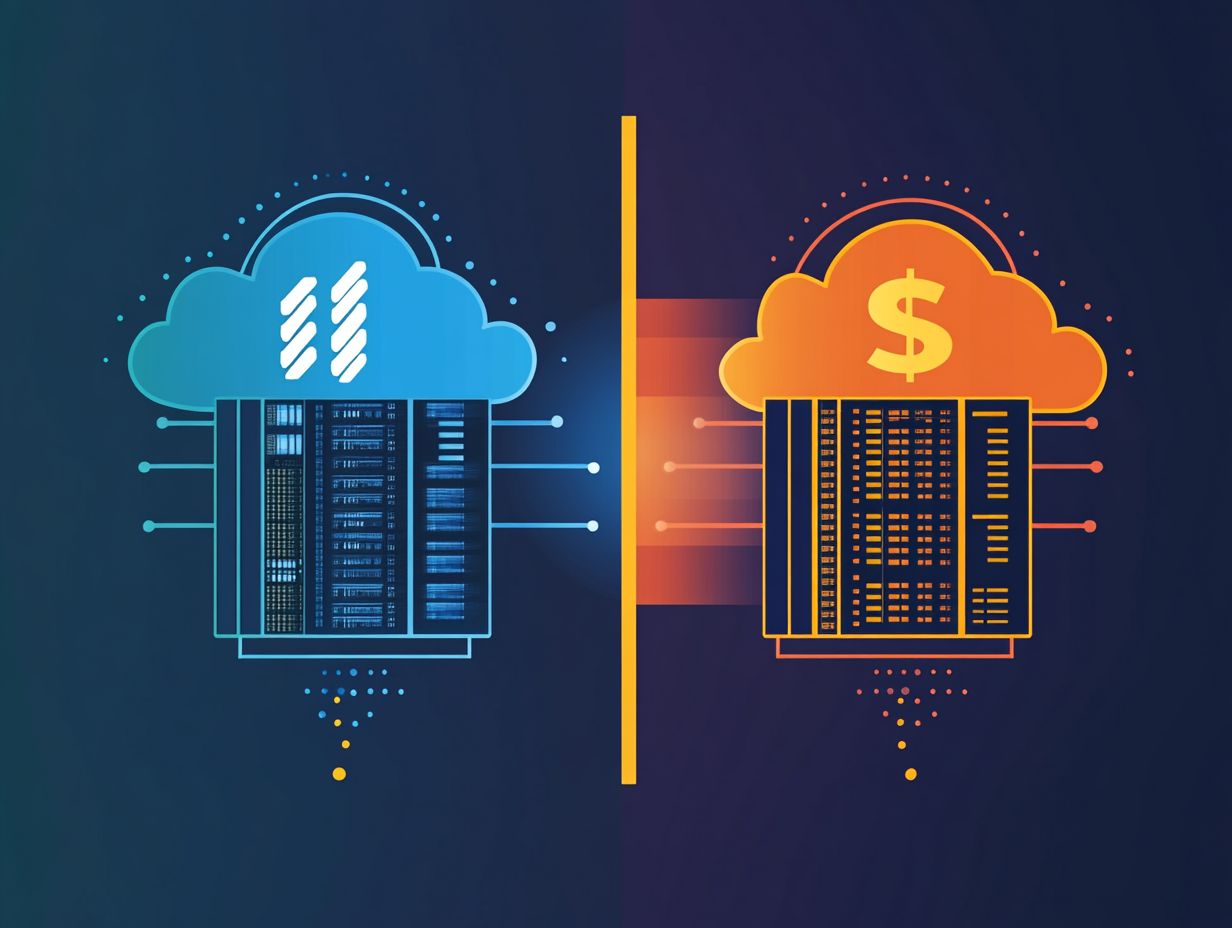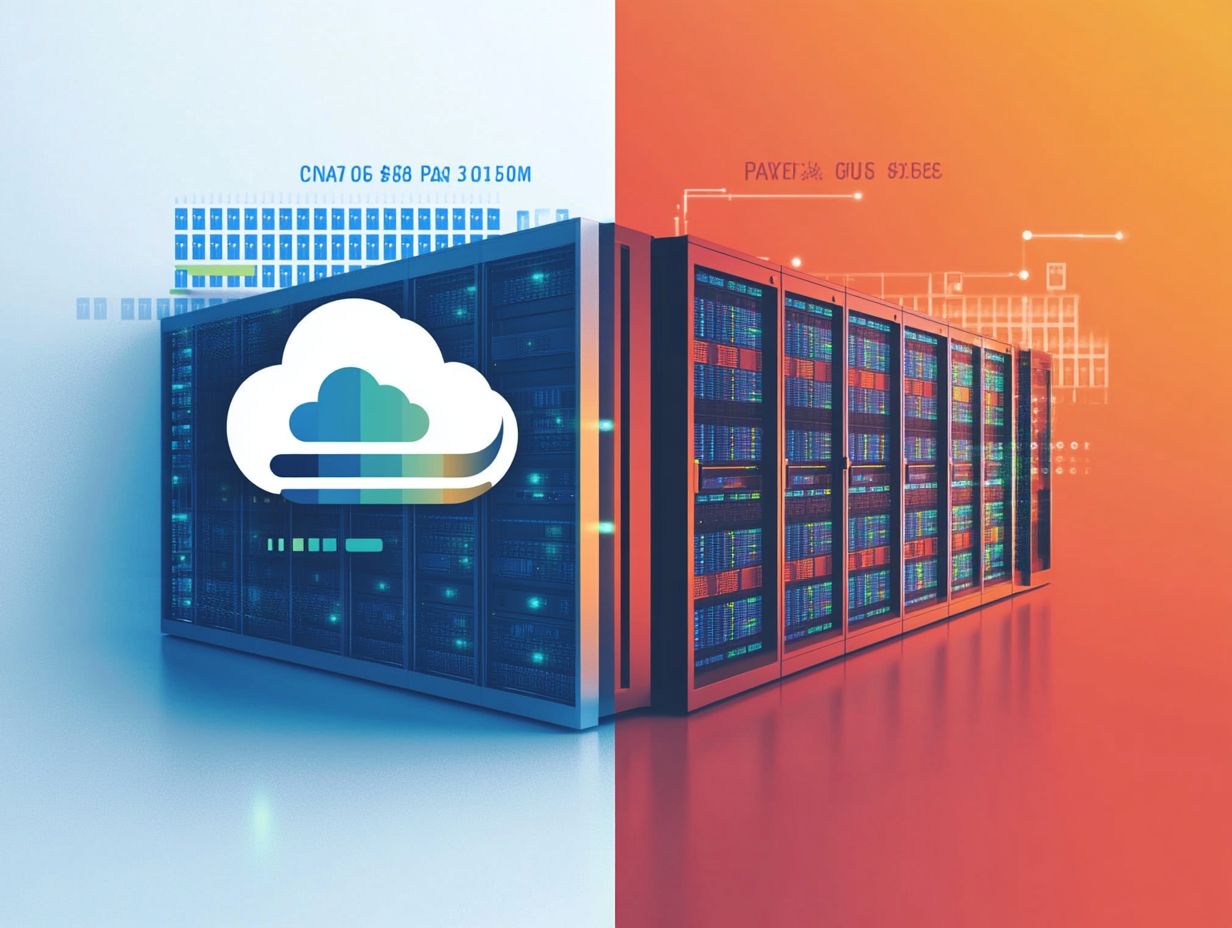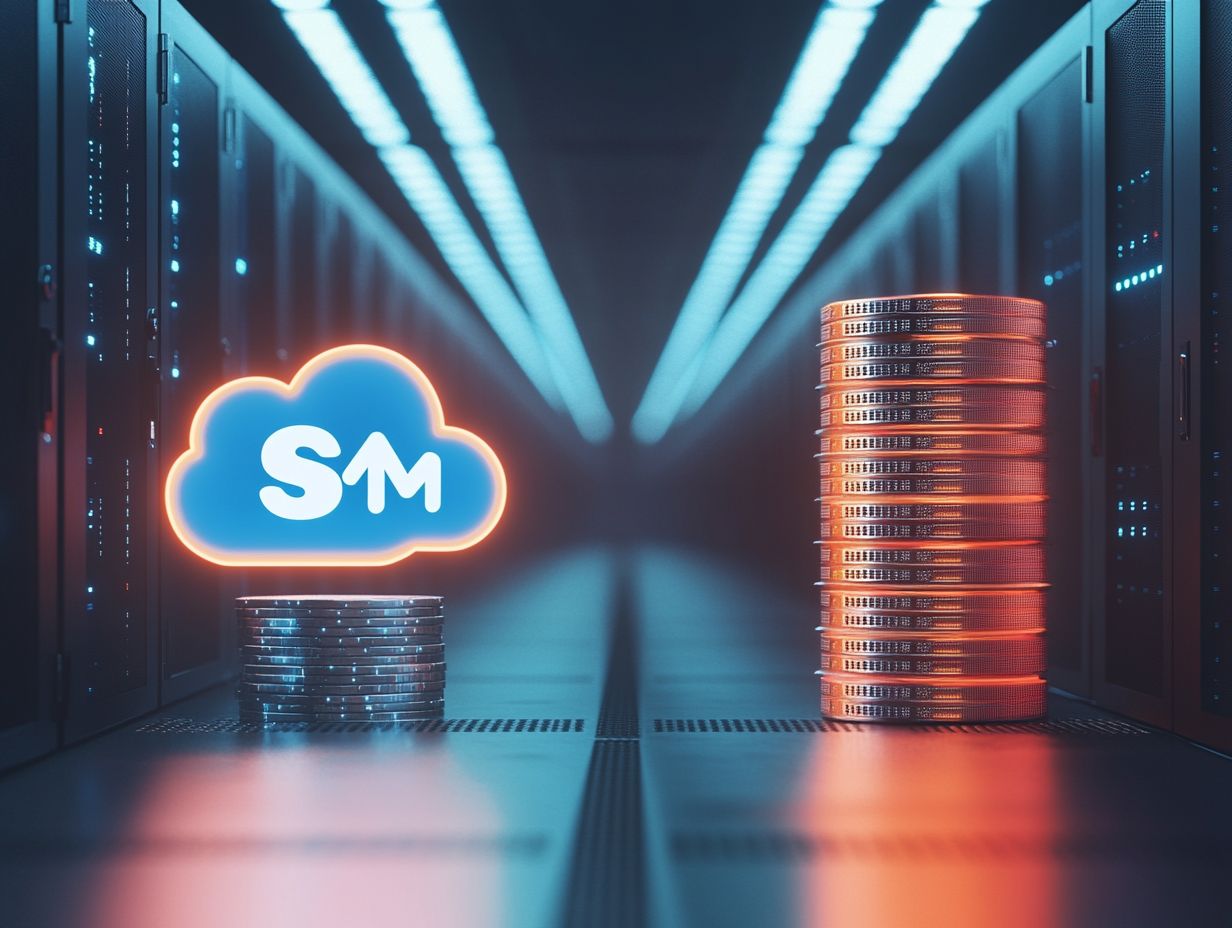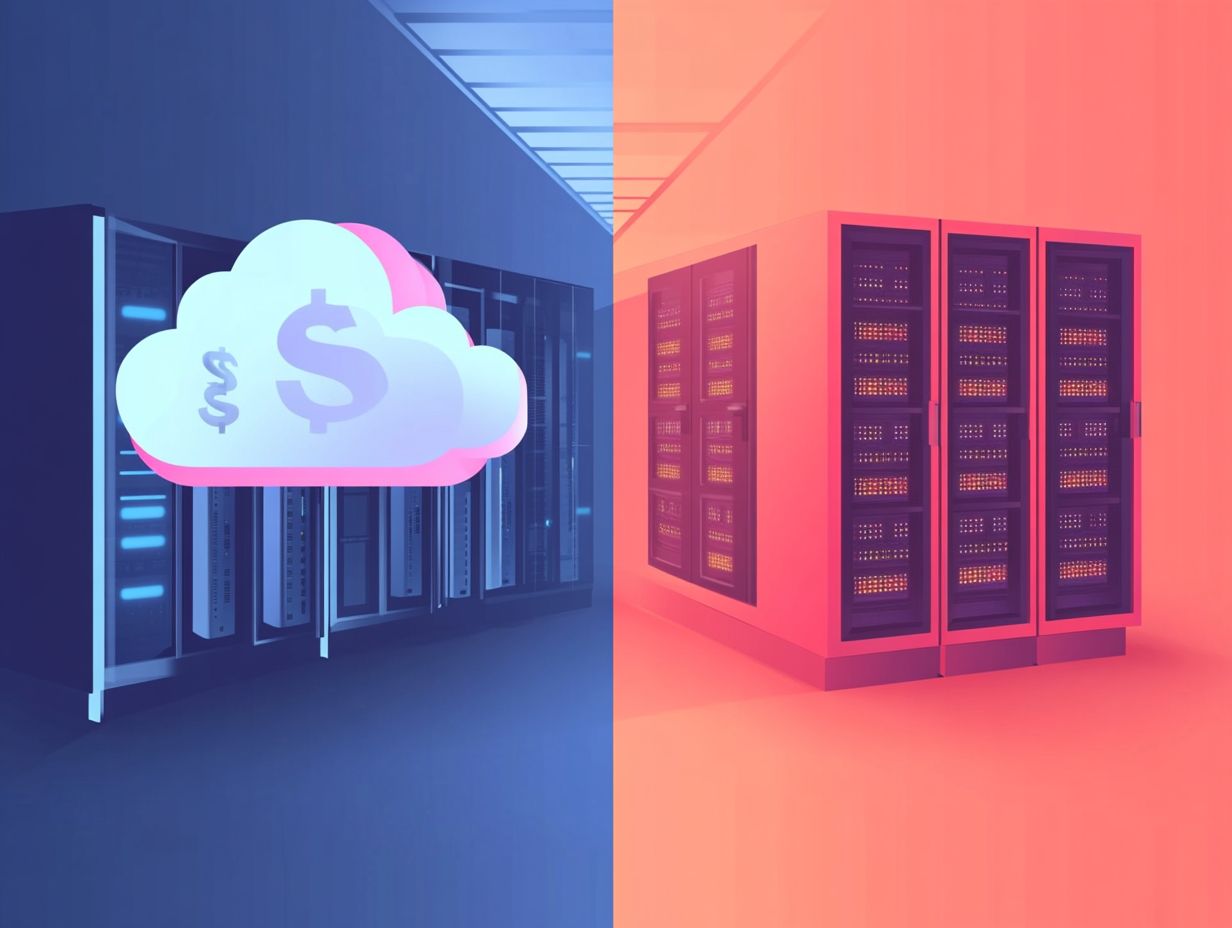Cost Comparison: PaaS vs On-Premise Solutions
In the fast-evolving tech world, choosing your infrastructure is more critical than ever. You must choose between Platform as a Service (PaaS) and traditional on-premises solutions.
The choice between PaaS and on-premises solutions can greatly affect both your operations and budget. This article delves into the essentials of each option, defining them clearly while exploring their main differences and the financial implications that accompany each choice.
It provides a thorough comparison of total ownership costs, illuminating the benefits and drawbacks associated with PaaS and on-premises setups. Whether you re scaling a startup or overseeing an enterprise, grasping these elements is essential for making informed and strategic decisions.
Contents
- Key Takeaways:
- Overview of PaaS and On-Premises Solutions
- Cost Considerations for PaaS
- Cost Considerations for On-Premise Solutions
- Comparing Total Cost of Ownership
- Benefits of PaaS and On-Premise Solutions
- Frequently Asked Questions
- What is the difference between PaaS and on-premise solutions?
- Which is more cost-effective, PaaS or on-premise solutions?
- What are the initial costs associated with PaaS and on-premise solutions?
- Are there any hidden costs associated with PaaS and on-premise solutions?
- Can Platform as a Service (PaaS) and on-premise solutions be used together?
- What factors should I consider when choosing between PaaS and on-premise solutions?
Key Takeaways:

PaaS solutions often have lower upfront costs and can save on infrastructure and maintenance expenses.
On-premises solutions may require a larger initial investment but can offer more control and customization options. When comparing total cost of ownership, it’s important to consider factors such as scalability, security, and future business needs.
Overview of PaaS and On-Premises Solutions
PaaS presents a dynamic cloud-based environment that fosters the development of innovative SaaS products, while on-premises solutions depend largely on your existing infrastructure and hardware.
Grasping the fundamental differences between these deployment models is essential as you seek to elevate your digital transformation efforts and align your IT strategies with your overarching business objectives.
Definition and Main Differences
Platform as a Service (PaaS) is a cloud service model that provides a platform allowing customers to develop, run, and manage applications without the complexity of building and maintaining the infrastructure. PaaS presents a sophisticated cloud-based solution that enables you to build, deploy, and manage applications effortlessly, all while sidestepping the complexities of infrastructure maintenance.
In contrast, on-premises technology entails hardware and software solutions housed within your organization’s facilities. Unlike on-premises setups, which demand substantial upfront investments in hardware, continual maintenance, and a dedicated IT team, PaaS significantly lowers operational costs through a pay-as-you-go model.
Regarding data security, cloud providers typically employ advanced protocols that offer robust protection against cyber threats, whereas on-premises systems can expose your organization to increased risks if not meticulously maintained. Compliance considerations also vary greatly; PaaS offerings generally come with built-in features designed to help you navigate various regulatory standards seamlessly.
Organizations utilizing on-premises technology may encounter hurdles in maintaining compliance. Ultimately, the choice between these models profoundly impacts user experience and customization options.
PaaS tends to give developers a comprehensive suite of tools that enhance creativity and efficiency, streamlining your organizational management in the process.
Cost Considerations for PaaS
When evaluating Platform as a Service (PaaS), you should carefully look at the associated costs, including subscription fees, operational expenses, and potential migration costs.
Although PaaS can considerably alleviate the financial strain of maintaining on-premises technology, it s crucial to comprehend the pricing models and vendor responsibilities. This understanding is essential for effective budgeting and robust cost management.
Subscription and Usage Fees
Subscription and usage fees play a pivotal role in PaaS, allowing you to pay only for what you use while gaining access to robust cloud computing capabilities for data storage and application management.
This model not only frees you from hefty upfront infrastructure costs but also offers a customized approach to resource allocation, adapting effortlessly to your fluctuating workloads.
Major providers like Google Cloud Platform and Microsoft Azure present tiered subscription plans tailored to diverse project needs, ensuring you can scale your resources up or down without the burden of long-term commitments.
This flexibility gives your team the power to innovate at a rapid pace, leveraging high-performance tools and services according to your immediate demands.
In today s ever-evolving tech landscape, grasping the nuances of these pricing structures is crucial for optimizing cost efficiency and enhancing overall productivity.
Additional Expenses

While cloud service typically brings cost efficiencies, it s essential for you to remain vigilant about additional expenses that might pop up. These can include technical support, compliance costs, and operational expenditures linked to using cloud infrastructure.
These costs can encompass various elements, including data transfer fees, storage costs for backups, and the possible need for training your personnel on the new system.
When you stack these against on-premises solutions, it becomes clear that although the initial costs for cloud services may be appealingly low, the ongoing expenses can accumulate significantly.
Budgeting for these costs is critical to avoid surprises later, especially when it comes to compliance with regulations demanding regular audits and maintenance responsibilities that could have slipped your mind during the planning stages.
You must have a strong financial strategy in place to address these evolving needs effectively.
Cost Considerations for On-Premise Solutions
When contemplating on-premises solutions, you must carefully evaluate the substantial initial investment and ongoing maintenance costs involved. This includes hardware needs, software licenses, and the management of legacy applications.
These financial considerations can greatly affect the overall feasibility of sustaining an on-premises IT infrastructure.
Initial Investment and Maintenance Costs
The initial investment in on-premises solutions can be substantial. It encompasses hardware requirements, software licenses, and ongoing maintenance costs that you must budget for to ensure uninterrupted operation and compliance.
These expenses can range from purchasing servers and storage devices to securing essential updates and support services for your software.
You may find yourself navigating various licensing models, including perpetual licenses, subscription fees, or usage-based pricing each with its own financial implications.
While perpetual licensing might appear appealing at first, the costs of upgrades and the risk of vendor lock-in can complicate your long-term management strategy.
When comparing this to cloud services, you’ll see that they often feature predictable subscription costs and lessen the burden of infrastructure.
Upgrades and Additional Expenses
Upgrades are a continual concern for organizations relying on on-premises solutions, bringing additional expenses tied to operational costs, compliance, and the management of legacy applications that often demand separate updates and support.
For many, the real challenge isn’t just the financial burden; it’s also about how to allocate resources effectively to navigate these complexities.
Legacy applications can weigh heavily on IT teams, leading to unexpected costs as they strive to maintain compatibility with newer systems.
This struggle can result in service disruptions and increased downtime that no one wants to deal with. Conversely, organizations that embrace cloud service offerings tend to experience more streamlined upgrade pathways.
They can implement changes with less friction, reduced costs, and a minimized risk of disrupting overall operations, ultimately fostering a more agile approach to managing technology.
Comparing Total Cost of Ownership
The total cost of ownership (TCO) is an essential metric for you to consider when evaluating the long-term financial implications of adopting either cloud services or on-premises solutions.
It encompasses all operational costs, migration expenses, and financial outlays associated with hardware requirements and software licenses.
Understanding TCO will empower you to make informed decisions that align with your organization s strategic goals.
Factors to Consider

When you compare the total cost of owning and using a service over time (TCO) for PaaS and on-premises solutions, consider several key factors. These include operational costs, compliance costs, and what each service provider is responsible for. Each of these can significantly impact your overall financial landscape.
It’s essential for decision-makers to grasp how each element fits into the bigger picture. Operational costs aren’t just about initial investments; they also include ongoing expenses like maintenance and updates.
Compliance costs can vary dramatically based on industry standards and regulations. This can place additional financial pressures on organizations that choose on-premises solutions.
PaaS alters risk and accountability dynamics, allowing organizations to focus more on innovation rather than being bogged down by infrastructure management.
This broad view helps you see which model fits your goals and finances best.
Benefits of PaaS and On-Premise Solutions
Both PaaS and on-premises solutions offer unique advantages tailored to meet your organization’s specific requirements.
PaaS provides remarkable scalability and flexibility, adapting effortlessly to your evolving needs. On the other hand, on-premises solutions offer enhanced control and robust security, making them ideal for managing sensitive data effectively.
Advantages and Disadvantages
PaaS offers numerous advantages, such as reduced operational costs and improved enterprise mobility solutions. However, it’s important to recognize the potential downsides, including data security concerns and dependence on cloud service providers. These factors significantly impact your technology strategy.
For instance, while lower costs allow you to allocate resources more effectively, relying on third-party vendors can result in vendor lock-in, ultimately constraining your flexibility. On-premises solutions, however, provide greater control and security since sensitive data remains within your organization s infrastructure.
Yet, they typically demand considerable upfront investment and ongoing maintenance, which can strain your budget and resources. Therefore, it’s essential for decision-makers like you to weigh these pros and cons diligently.
The choice between PaaS and on-premises solutions can profoundly influence your organization s operational agility and long-term financial health.
Frequently Asked Questions
Here are some common questions about PaaS and on-premise solutions:
What is the difference between PaaS and on-premise solutions?
Platform as a Service (PaaS) refers to a cloud computing model where applications and development tools are provided as a service over the internet. In contrast, on-premise solutions are software or systems installed and run on local computers or servers.
Which is more cost-effective, PaaS or on-premise solutions?

It depends on your business’s specific needs and resources. Generally, PaaS can be more cost-effective for smaller businesses with limited resources, as it eliminates the need for upfront hardware and software investments. However, for larger businesses with existing infrastructure, on-premise solutions may be more cost-effective in the long run.
What are the initial costs associated with PaaS and on-premise solutions?
PaaS typically has lower initial costs since it removes the need for hardware and software investments. On-premise solutions require upfront investments for purchasing and maintaining hardware and software licenses. However, on-premise solutions may have lower ongoing costs in the long run compared to PaaS.
Both PaaS and on-premise solutions may have hidden costs that are often overlooked. With PaaS, additional fees may be charged for exceeding storage and bandwidth limits. On-premise solutions may also have hidden costs for maintenance, upgrades, and data storage.
Explore the benefits of each to find what fits your needs best!
Can Platform as a Service (PaaS) and on-premise solutions be used together?
Yes! You can combine PaaS and on-premise solutions in a hybrid cloud model. This approach lets businesses enjoy the scalability and cost-effectiveness of PaaS while maintaining the security and control of on-premise systems.
What factors should I consider when choosing between PaaS and on-premise solutions?
Consider your business needs, available resources, security concerns, scalability requirements, and budget.
Carefully evaluate the pros and cons of each option to find the best fit for your business!






